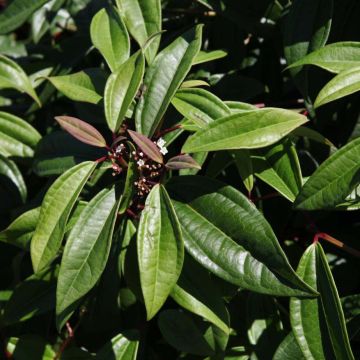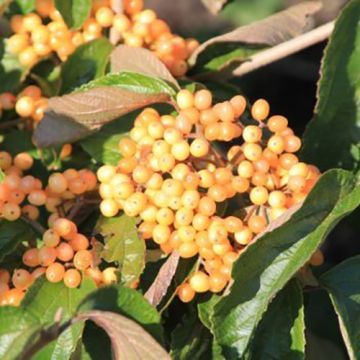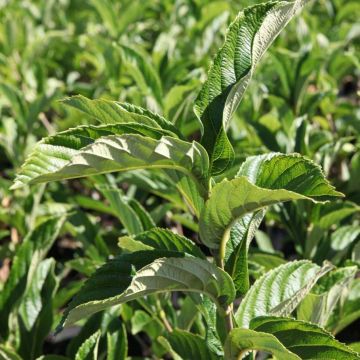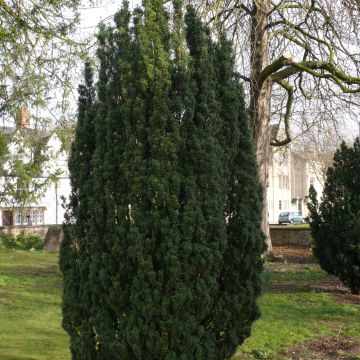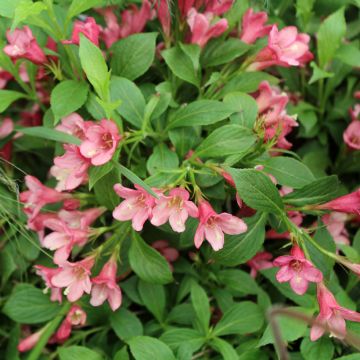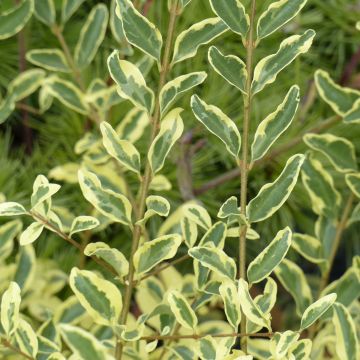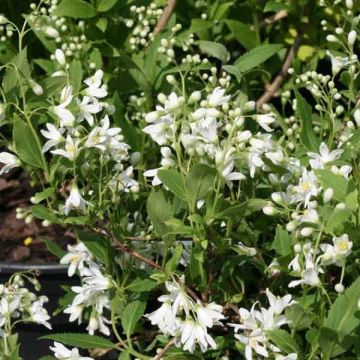

Viburnum lantana Mohican


Viburnum lantana Mohican
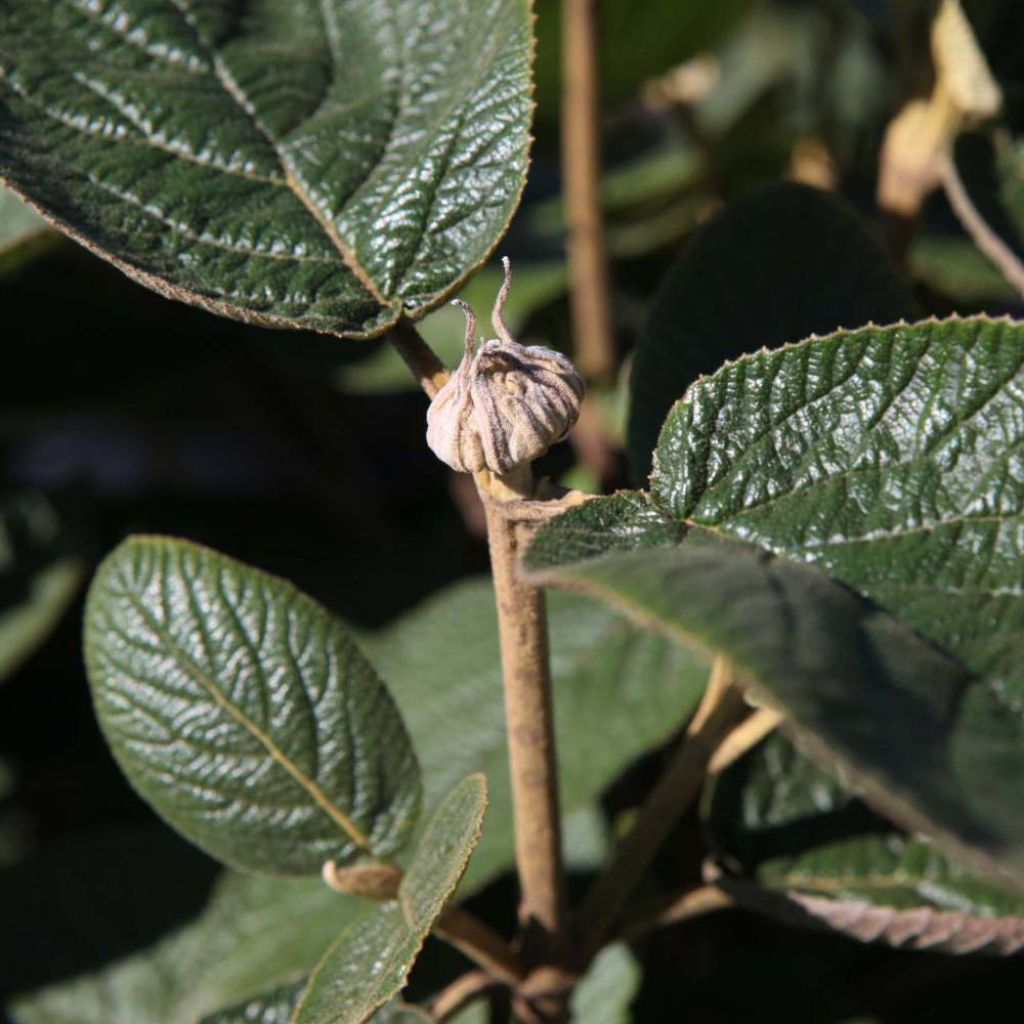

Viburnum lantana Mohican
Viburnum lantana Mohican
Viburnum lantana Mohican
Wayfaring Tree
The plant arrived in perfect condition, well balanced, and will be installed in partial shade like its cousins.
Mi , 26/03/2024
This item cannot be shipped to the selected country
Delivery charge from €5.90
More information
Schedule delivery date,
and select date in basket
This plant carries a 24 months recovery warranty
More information
We guarantee the quality of our plants for a full growing cycle, and will replace at our expense any plant that fails to recover under normal climatic and planting conditions.
From €5.90 for pickup delivery and €6.90 for home delivery
Express home delivery from €8.90.

Does this plant fit my garden?
Set up your Plantfit profile →
Description
Viburnum lantana 'Mohican' is simply a compact form of our native wayfaring tree, therefore better suited to small spaces. This variety possesses all the beautiful qualities of its larger sister, appreciated in country settings. Recognizable by its woolly young shoots, this wayfaring tree is a deciduous dense bush of medium size, adorned with foliage that ignites in autumn. The round heads of white-cream flowers bloom generously in spring with a pleasant fragrance, and then give way to ornamental fruiting. Sometimes considered a bit dull in comparison to its Asian cousins, this wayfaring tree on the other hand has a robust temperament, an excellent adaptation to our climate as well as a great tolerance to our limestone soils.
Originally from central and southern Europe, western Asia and North Africa, Viburnum lantana is known by different names depending on the region, such as lantane, wayfaring tree or cochène. It is a deciduous bush that grows in light woods and thickets, often on limestone soil at altitudes below 1600m (5249ft). The 'Mohican' cultivar has a more compact habit and smaller dimensions than the species, not exceeding 2m (6 in 7ft) in height by 2.25m (7ft 5in) in spread. The abundant flowering from April to June occurs at the tips of one-year-old branches. The round and flattened clusters, measuring 4 to 10cm (1.6 - 3.9 inches) in diameter, are composed of 5mm (0.2in) white flowers with prominent yellow stamens. This fragrant flowering is followed by an unusual cluster fruiting, which can be enjoyed from September to December. The fruits are spherical, measuring 8mm (0.3in) in diameter, and successively change colour from pink to red and then black when ripe. They attract birds, which will brighten up the shortest and gloomiest days of the year. The foliage, deciduous, grey-green at budbreak and then darker, stands out well from the flowers. The large, drooping, thick and rough leaves are ovate and finely toothed, with the underside covered in fuzz. Each leaf measures up to 10cm (3.9in) in length and 6cm (2.4in) in width. The autumn colours, often splendid, vary from year to year and are likely dependent on climatic conditions and soil nature. The young, woolly-looking branches are flexible and covered in small star-shaped hairs, which gradually turn grey over time.
Hardy well beyond -15°C, Viburnum lantana 'Mohican' adapts to many growing conditions, across a wide geographic range. It can be used as a standalone plant, in informal hedges, in flower beds or in groves. Plant it in a high-traffic area to fully enjoy its fragrance (under a window or next to a door, for example). This variety, better suited to smaller gardens, allows for the creation of a very pleasant country atmosphere in the company of other native plants such as medlars, spindle trees, hazels, blackthorns as well as some perennials from the same field of plants: viper's bugloss, teasels, valerians, mulleins ...
Report an error about the product description
Viburnum lantana Mohican in pictures




Plant habit
Flowering
Foliage
Botanical data
Viburnum
lantana
Mohican
Caprifoliaceae (Adoxaceae)
Wayfaring Tree
Western Europe
Other Viburnum
Planting and care
Viburnum lantana 'Mohican' thrives in sunny or semi-shady positions. Plant it from March to June and from September to December (excluding freezing periods) in ordinary, fairly deep soil, preferably neutral to alkaline. Provide drainage in compact soils (mix gravel or river sand with your garden soil) and enrich with compost over several years if your substrate seems particularly poor and rocky. Once well established, this wayfaring tree tolerates summer drought, even in hot and dry regions. Prune it lightly after flowering by removing faded flowers to maintain a compact shape.
Planting period
Intended location
Care
-
, onOrder confirmed
Reply from on Promesse de fleurs
Hedge shrubs
Haven't found what you were looking for?
Hardiness is the lowest winter temperature a plant can endure without suffering serious damage or even dying. However, hardiness is affected by location (a sheltered area, such as a patio), protection (winter cover) and soil type (hardiness is improved by well-drained soil).

Photo Sharing Terms & Conditions
In order to encourage gardeners to interact and share their experiences, Promesse de fleurs offers various media enabling content to be uploaded onto its Site - in particular via the ‘Photo sharing’ module.
The User agrees to refrain from:
- Posting any content that is illegal, prejudicial, insulting, racist, inciteful to hatred, revisionist, contrary to public decency, that infringes on privacy or on the privacy rights of third parties, in particular the publicity rights of persons and goods, intellectual property rights, or the right to privacy.
- Submitting content on behalf of a third party;
- Impersonate the identity of a third party and/or publish any personal information about a third party;
In general, the User undertakes to refrain from any unethical behaviour.
All Content (in particular text, comments, files, images, photos, videos, creative works, etc.), which may be subject to property or intellectual property rights, image or other private rights, shall remain the property of the User, subject to the limited rights granted by the terms of the licence granted by Promesse de fleurs as stated below. Users are at liberty to publish or not to publish such Content on the Site, notably via the ‘Photo Sharing’ facility, and accept that this Content shall be made public and freely accessible, notably on the Internet.
Users further acknowledge, undertake to have ,and guarantee that they hold all necessary rights and permissions to publish such material on the Site, in particular with regard to the legislation in force pertaining to any privacy, property, intellectual property, image, or contractual rights, or rights of any other nature. By publishing such Content on the Site, Users acknowledge accepting full liability as publishers of the Content within the meaning of the law, and grant Promesse de fleurs, free of charge, an inclusive, worldwide licence for the said Content for the entire duration of its publication, including all reproduction, representation, up/downloading, displaying, performing, transmission, and storage rights.
Users also grant permission for their name to be linked to the Content and accept that this link may not always be made available.
By engaging in posting material, Users consent to their Content becoming automatically accessible on the Internet, in particular on other sites and/or blogs and/or web pages of the Promesse de fleurs site, including in particular social pages and the Promesse de fleurs catalogue.
Users may secure the removal of entrusted content free of charge by issuing a simple request via our contact form.
The flowering period indicated on our website applies to countries and regions located in USDA zone 8 (France, the United Kingdom, Ireland, the Netherlands, etc.)
It will vary according to where you live:
- In zones 9 to 10 (Italy, Spain, Greece, etc.), flowering will occur about 2 to 4 weeks earlier.
- In zones 6 to 7 (Germany, Poland, Slovenia, and lower mountainous regions), flowering will be delayed by 2 to 3 weeks.
- In zone 5 (Central Europe, Scandinavia), blooming will be delayed by 3 to 5 weeks.
In temperate climates, pruning of spring-flowering shrubs (forsythia, spireas, etc.) should be done just after flowering.
Pruning of summer-flowering shrubs (Indian Lilac, Perovskia, etc.) can be done in winter or spring.
In cold regions as well as with frost-sensitive plants, avoid pruning too early when severe frosts may still occur.
The planting period indicated on our website applies to countries and regions located in USDA zone 8 (France, United Kingdom, Ireland, Netherlands).
It will vary according to where you live:
- In Mediterranean zones (Marseille, Madrid, Milan, etc.), autumn and winter are the best planting periods.
- In continental zones (Strasbourg, Munich, Vienna, etc.), delay planting by 2 to 3 weeks in spring and bring it forward by 2 to 4 weeks in autumn.
- In mountainous regions (the Alps, Pyrenees, Carpathians, etc.), it is best to plant in late spring (May-June) or late summer (August-September).
The harvesting period indicated on our website applies to countries and regions in USDA zone 8 (France, England, Ireland, the Netherlands).
In colder areas (Scandinavia, Poland, Austria...) fruit and vegetable harvests are likely to be delayed by 3-4 weeks.
In warmer areas (Italy, Spain, Greece, etc.), harvesting will probably take place earlier, depending on weather conditions.
The sowing periods indicated on our website apply to countries and regions within USDA Zone 8 (France, UK, Ireland, Netherlands).
In colder areas (Scandinavia, Poland, Austria...), delay any outdoor sowing by 3-4 weeks, or sow under glass.
In warmer climes (Italy, Spain, Greece, etc.), bring outdoor sowing forward by a few weeks.

































